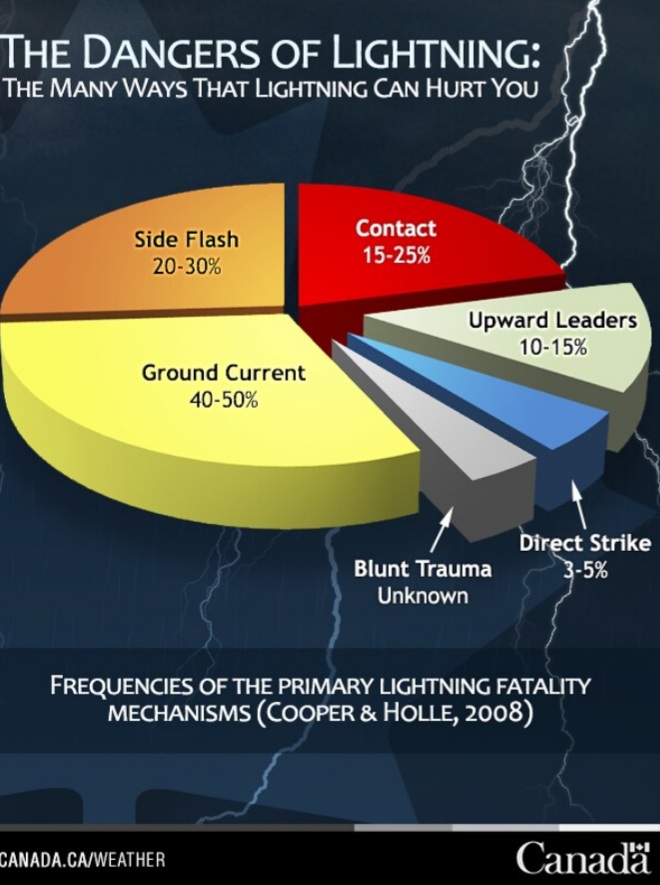**** Info via Environment Canada
Lightning myths busted!
Nationally, 88,414 cloud-ground lightning strokes have been recorded between January 1 and May 31, 2021. As we head deeper into the summer months, lightning awareness becomes ever more important. In fact, already, on June 14, 720 cloud-ground lightning stroke knocked power out to thousands in and around Ottawa, ON. Many lightning injuries and deaths can be avoided by knowing when to take action and what to do. For this year’s Lighting Safety Week, let’s debunk some lightning myths!
Myth #1
Tree cover IS NOT a safe place to shelter during a thunderstorm. Contrary to popular belief, the majority of injuries and fatalities are not caused by a direct lightning strike but by ground current and side flash events.
The leaves of the tree may keep you dry for a short while but your chances of being struck by lightning increase dramatically. About 20% of lightning deaths occur from people sheltering under a tree or in an outdoor gazebo.
Myth #2
Rubber on the tires of a car (or wearing rubber soled shoes) DO NOT provide protection from lightning. You are safe inside a car because of its metal frame, this is known in scientific terms as a “Faraday cage.”
Myth #3
You WILL NOT get a shock if you touch a person who was just struck by lightning. Call 911 and begin life-saving measures immediately.
Myth #4
A final misconception – is that there is no danger from lightning if it’s not raining. This is not true. Statistics show that two thirds of damaging lightning strikes occur when the storm is not directly above the victim – but is approaching or has just passed by. Current lightning research, which includes high-speed photography, shows that the atmosphere around a thunderstorm becomes highly electrified. Lightning has been observed more than 40 kilometres from storm clouds.
So when planning outdoor activities this summer, check the weather forecasts, and keep an eye on the sky as weather conditions can change quickly. Our Canadian Lightning Danger Map displays high-risk lightning areas in red, with animation showing the movement of the storms. These maps are updated at every 10-minute intervals and are based on recent lightning observations.
For more: Lightning safety, statistics, science, frequently asked questions.




